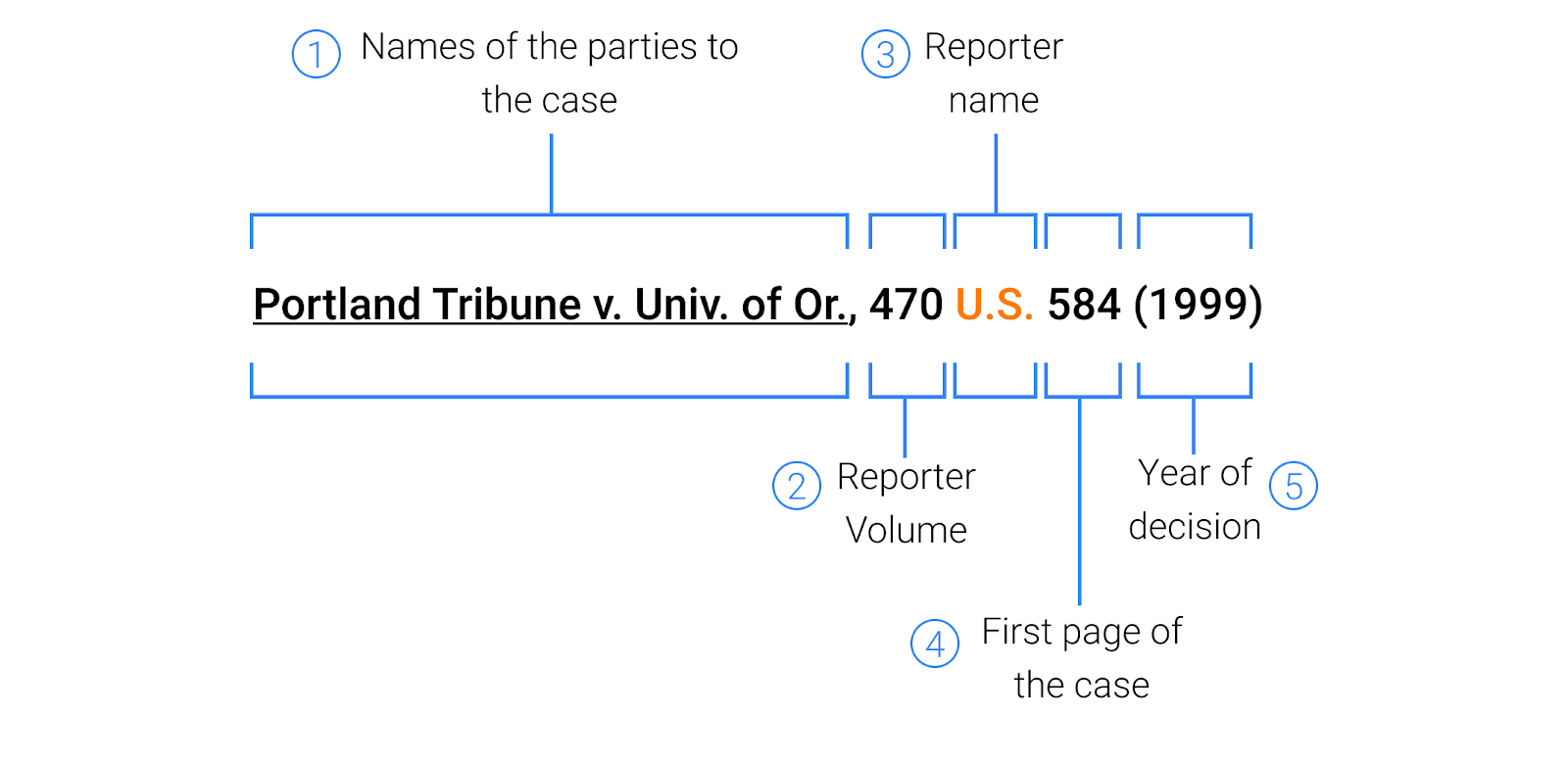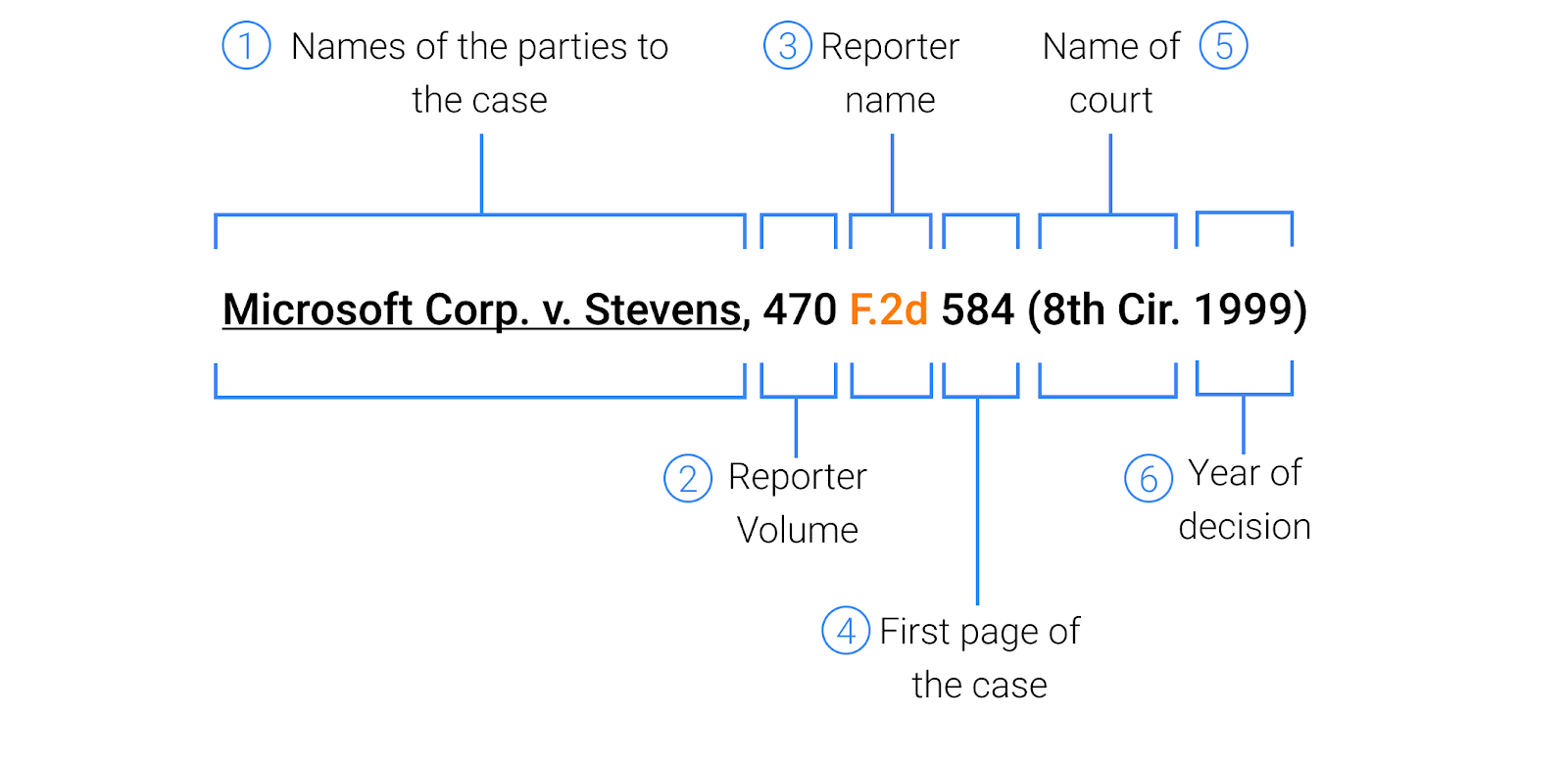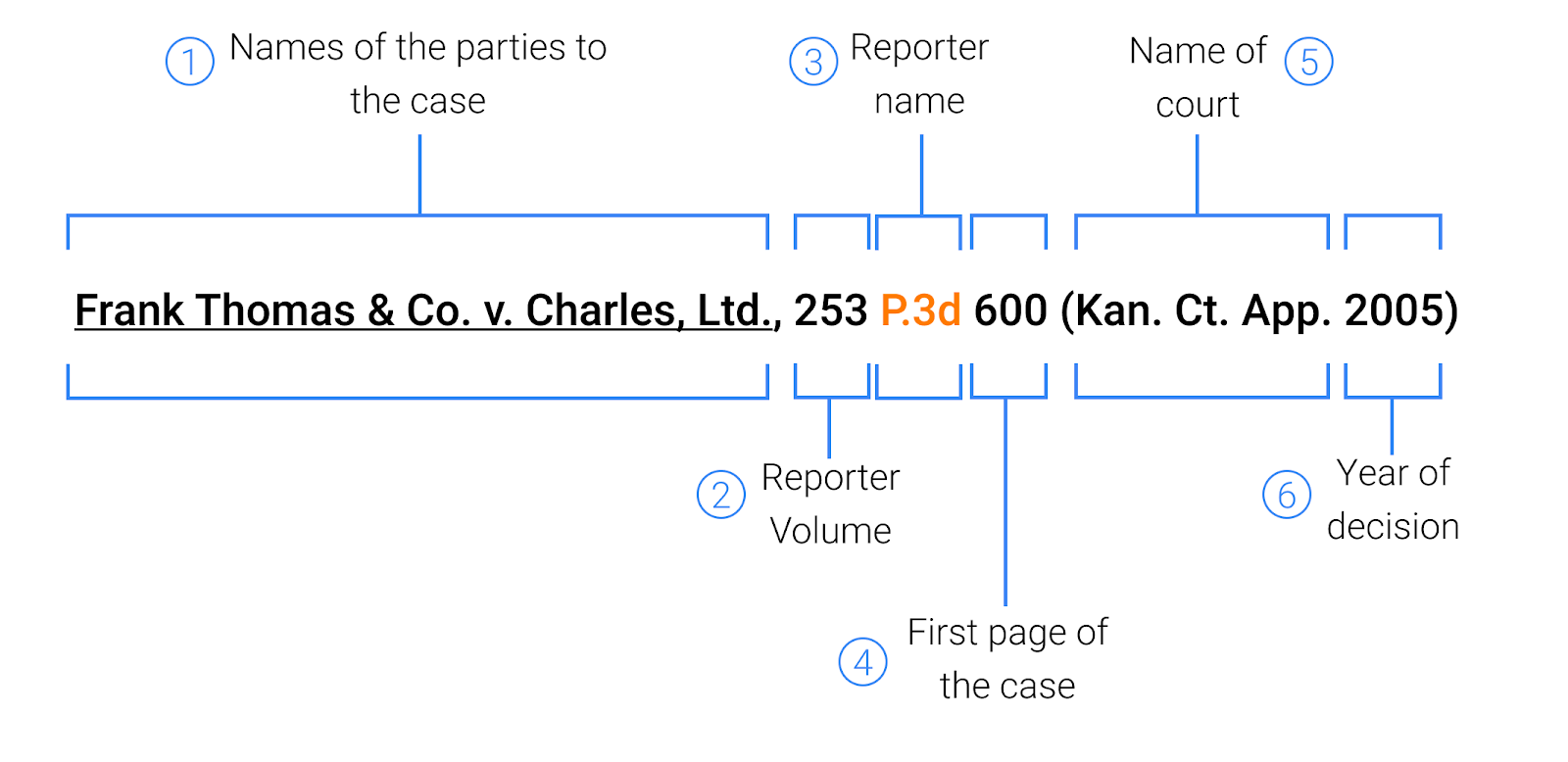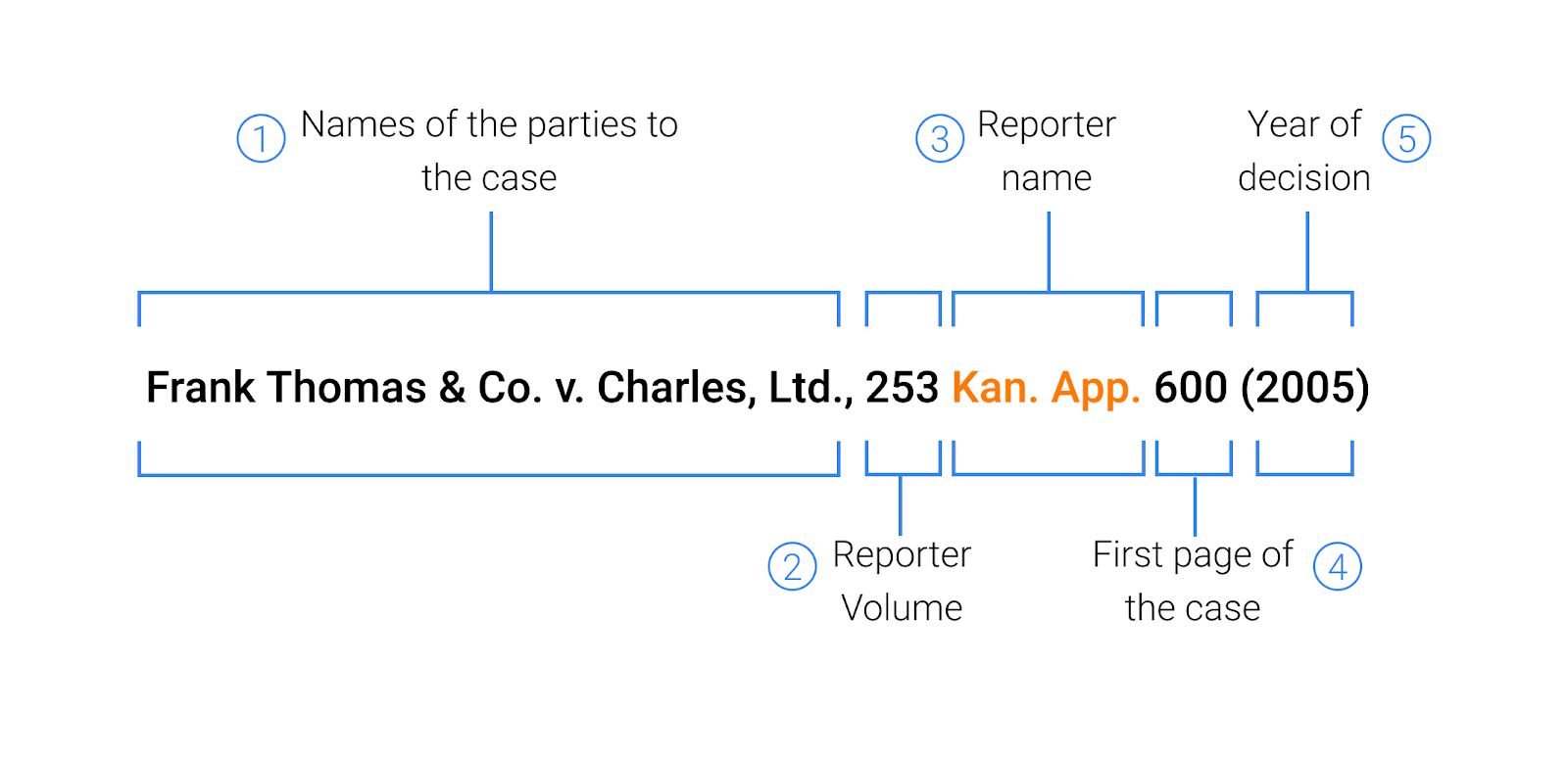How to Cite a Petition for Writ Blue Book
In legal writing, one of the most commonly cited types of sources are judicial opinions. A citation to a judicial opinion is typically referred to as a "case" or "court case" citation.
In this Bluebook Cheat Sheet, we've laid out the essential Bluebook elements and Bluebook examples for a few of the most common types of case citations. This guide is only a general reference and starting point and should be used in conjunction with LegalEase or the Bluebook.
General Format

As seen in the example above, the basic elements to a Bluebook case citation are:
- Party names
- The volume of the reporter
- The name of the reporter
- First page of the case
- The name of the court
- The year of decision
There are extensive Bluebook rules regarding what parts of the party names are to be included, omitted, or abbreviated, depending on several factors. The names of the parties are italicized or underlined depending on the ultimate use of the citation.
A citation should help the reader locate the source. So the volume of the specific reporter that the case is published in is included in the citation.
Reporters are books or other publications (usually with numerous volumes) that compile judicial opinions for a jurisdiction, geographic region, or a single court. The Bluebook contains many rules for how to omit, include, abbreviate, and prioritize which reporter is being cited.
A case citation should include the first page of the particular reporter on which the judicial opinion begins.
Generally, a Bluebook citation will include the name of the court that produced the opinion that is being cited. Like with other elements of the citation, the Bluebook prescribes extensive rules for how to abbreviate the names of the court and when to include or omit the name of the court entirely - considering factors like the supremacy of the court and the name of the reporter.
Finally, a Bluebook case citation include the year that the court decided the case.
Supreme Court
When citing a United States Supreme Court opinion, the Bluebook says that you must cite from the United States Reporter (abbreviated as "U.S.") - the official reporter. If the case isn't published there, you must cite from the Supreme Court Reporter (abbreviated as "S. Ct."). Finally, if the case isn't found in the Supreme Court Reporter, then you must cite from the United States Supreme Court Reports, Lawyers' Edition (abbreviated as "L. Ed."). Below are 3 examples of a United States Supreme Court Bluebook citation, under the 3 scenarios.
- Cite to United States Reporter
- If the case is not available in the United States Reporter, cite to Supreme Court Reporter
- If the case is not available in the Supreme Court Reporter, cite to United States Supreme Court Reports, Lawyers' Edition



U.S. Court of Appeals
If you are Bluebook citing a case that was decided in a U.S. Courts of Appeals, you will most likely find it published in the reporter, Federal Reporter, produced by West Publishing. There are currently three series of the Federal Reporter that are cited as "F.", "F.2d", or "F.3d". This is an example of a citation of a U.S. Court of Appeals Bluebook citation:

U.S. District Court
If you are citing a case that was decided in a U.S. District Court, you will most likely find it published in the reporter, Federal Supplement, produced by West Publishing. There are currently three series of the Federal Supplement that are cited as "F. Supp.", "F. Supp. 2d", or "F. Supp. 3d". This is an example of a citation of a U.S. District Court Bluebook case citation:

State Courts
U.S. state judicial opinions are frequently published in more than one place. Judicial opinions from U.S. states can be published in official reporters from the states themselves. Also, state cases can be found in unofficial publications known as "Regional Reporters". West Publishing produces these regional reporters (broken down into seven regions). The Bluebook actually says that the unofficial regional reporters should be cited to, over the official state reporters, given the option. Here are two examples of Bluebook state court case citations, under both circumstances:
- Cite to the regional reporter
- If the case is not available in a regional reporter, cite to official state reporter


Short Forms
You will likely need to refer to the same citation several times throughout your legal writing. The Bluebook has extensive rules for how to refer to the cited case in a shorter format. This is known as the "short form" citation. While there is a general format for a Bluebook short form case citations, there are other formats that can be used, as well, depending on preference and circumstance. In the 4 short form citation examples below, notice how each successive citation gets shorter but still contains enough information to clearly indicate to the reader which case is being referred to. Also, take note the inclusion of the word "at" before the page being referenced.
Id.
The last example shows the use of "Id." which is an abbreviation of the Latin term idem - meaning "the same". Generally, you would use this format when the case you're referring was mentioned in the preceding citation. The Bluebook contains additional rules for when it is appropriate to use this format.
For example, let's assume that the below citation is the full citation of a case we are referencing:

Here are examples of what the Bluebook short form citations would look like:

Conclusion
The sheer complexity of the Bluebook means that citing a court case can be a time consuming, confusing, and daunting task. This guide has only scratched the surface of the countless rules contained in the Bluebook that need to be considered to create an accurate Bluebook court case citation. To name only a few, these rules deal with everything from properly formatting party names, to abbreviating the correct words with the correct abbreviations, to additional context-dependent parenthetical information. The LegalEase Bluebook Citation Generator is designed to make this process as simple as possible for you while producing a completely accurate court case citation - no matter how complex. Try a free trial at LegalEase today. Let us make your life just a little easier.
Source: https://legaleasecitations.com/bluebook-guides/the-ultimate-bluebook-case-citation-guide
0 Response to "How to Cite a Petition for Writ Blue Book"
Post a Comment